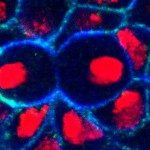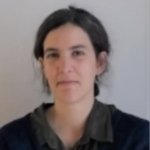Link to Pubmed [PMID] – 28428257
Link to DOI – 10.1091/mbc.E16-10-0694
Mol Biol Cell 2017 Jun; 28(12): 1612-1621
Tumor development progresses through a complex path of biomechanical changes leading first to cell growth and contraction and then cell deadhesion, scattering, and invasion. Tumorigenic factors may act specifically on one of these steps or have a wider spectrum of actions, leading to a variety of effects and thus sometimes to apparent contradictory outcomes. Here we used micropatterned lines of collagen type I/fibronectin on deformable surfaces to standardize cell behavior and measure simultaneously cell size, speed of motion and magnitude of the associated traction forces at the level of a single cell. We analyzed and compared the normal human breast cell line MCF10A in control conditions and in response to various tumorigenic factors. In all conditions, a wide range of biomechanical properties was identified. Despite this heterogeneity, normal and transformed motile cells followed a common trend whereby size and contractile forces were negatively correlated with cell speed. Some tumorigenic factors, such as activation of ErbB2 or loss of the βsubunit of casein kinase 2, shifted the whole population toward a faster speed and lower contractility state. Treatment with transforming growth factor β induced some cells to adopt opposing behaviors such as extremely high versus extremely low contractility. Thus tumor transformation amplified preexisting population heterogeneity and led some cells to exhibit biomechanical properties that were more extreme than those observed with normal cells.

